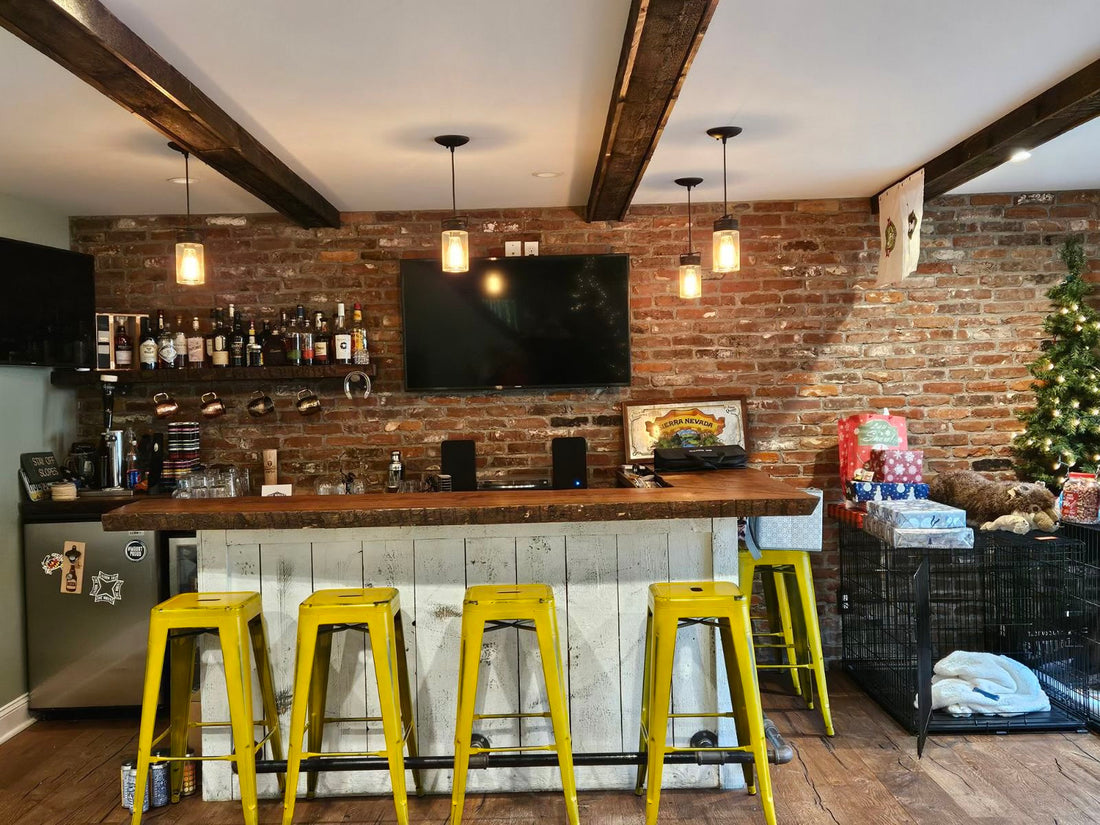Understanding Thin Bricks: More Than Just a Facade
Thin bricks, a revolutionary material in the world of architecture and interior design, are gaining immense popularity for their aesthetic appeal, versatility, and ease of installation. But what exactly are they, and what other names do they go by? This article delves into the fascinating world of thin bricks, exploring their various appellations and the many benefits they offer.
The Many Names of Thin Bricks
While 'thin brick' is the most common term, these versatile materials are known by several other names, each highlighting a different aspect of their nature:
- Brick Veneer: This is perhaps the most widely used alternative name. It emphasizes the primary function of thin bricks – to act as a decorative and protective outer layer, or veneer, without the structural load-bearing capacity of traditional bricks.
- Brick Slips: This term directly refers to the manufacturing process. Thin bricks are essentially cut or molded into thin 'slips' from larger brick units or created as standalone thin pieces.
- Thin Brick Veneer: A combination of the above, this term is very descriptive and leaves little room for ambiguity.
- Manufactured Thin Bricks: This highlights that, while mimicking the look of traditional bricks, they are often manufactured specifically in their thin form, sometimes using different materials or processes for consistency and lightness.
- Real Thin Bricks: This term is used to distinguish them from brick-effect wallpapers or paints, emphasizing that they are made from genuine fired clay or other authentic brick materials, just in a reduced thickness.
What Exactly is a Thin Brick?
At its core, a thin brick is a genuine brick product that has been significantly reduced in thickness. Unlike traditional bricks, which are typically 3.5 to 4 inches thick and designed to be laid in structural walls, thin bricks are usually between 0.5 to 1.25 inches thick. They are made from the same fired clay or concrete materials as their thicker counterparts, retaining the authentic look, texture, and feel of real brickwork.
The Advantages of Choosing Thin Bricks
The rise in popularity of thin bricks, or brick veneer, is driven by a multitude of practical and aesthetic advantages over traditional masonry:
1. Weight and Structural Integrity
The most significant advantage is their drastically reduced weight. Traditional bricks are heavy and require substantial foundations and structural support. Thin bricks, being so much lighter, can be installed on almost any structurally sound surface, including:
- Exterior walls of new construction (over sheathing).
- Existing wall surfaces, acting as a renovation material.
- Interior accent walls, fireplaces, and backsplashes.
- Even curved surfaces where traditional brick would be impractical.
They do not add significant structural load, making them ideal for projects where weight is a concern or where a full brick facade is not feasible.
2. Ease and Speed of Installation
The installation process for thin bricks is considerably simpler and faster than for traditional bricks. They can be adhered to various substrates using specialized thin-set mortar, much like tiling. This means:
- Less labor is required, potentially reducing overall project costs.
- The installation can be completed more quickly, allowing for faster project turnaround times.
- Minimal disruption, especially when used for renovations.
3. Cost-Effectiveness
While the initial material cost might be comparable to some traditional bricks, the overall cost of a thin brick project is often lower. This is due to:
- Reduced labor costs.
- Elimination of the need for heavy structural foundations and support systems.
- Less material wastage during installation.
4. Design Flexibility and Aesthetics
Thin bricks offer incredible design flexibility. They come in a vast array of colors, textures, sizes, and styles, mimicking everything from historic handmade bricks to modern, sleek designs. This allows designers and homeowners to achieve the coveted brick aesthetic in places where it was previously impossible or too expensive.
5. Durability and Low Maintenance
Made from genuine fired clay or concrete, thin bricks are inherently durable and resistant to weathering, fading, and damage. Once installed correctly with proper sealing, they require very little maintenance, typically just occasional cleaning to keep them looking their best. This makes them a long-lasting and practical choice for both interior and exterior applications.
Applications of Thin Bricks
The versatility of thin bricks means they can be used in a wide range of applications:
- Exterior Facades: Providing a classic or contemporary brick look without the weight.
- Interior Accent Walls: Adding warmth, character, and a rustic or industrial feel to living rooms, bedrooms, or dining areas.
- Kitchen Backsplashes: Creating a stylish and easy-to-clean surface.
- Fireplace Surrounds: Enhancing the focal point of a room with an authentic brick finish.
- Commercial Spaces: Used in restaurants, cafes, retail stores, and offices to create a desired ambiance.
- Landscaping Elements: Sometimes used for decorative garden walls or planters.
Conclusion: A Modern Solution with Timeless Appeal
Whether you call them brick veneer, brick slips, or thin brick veneer, these innovative materials offer a compelling solution for achieving the timeless beauty of brick without the traditional drawbacks. Their lightweight nature, ease of installation, cost-effectiveness, and design versatility make them an increasingly popular choice for a wide array of architectural and design projects in 2025 and beyond. If you’re looking to add character, warmth, and enduring style to your space, thin bricks are certainly a material worth considering.

